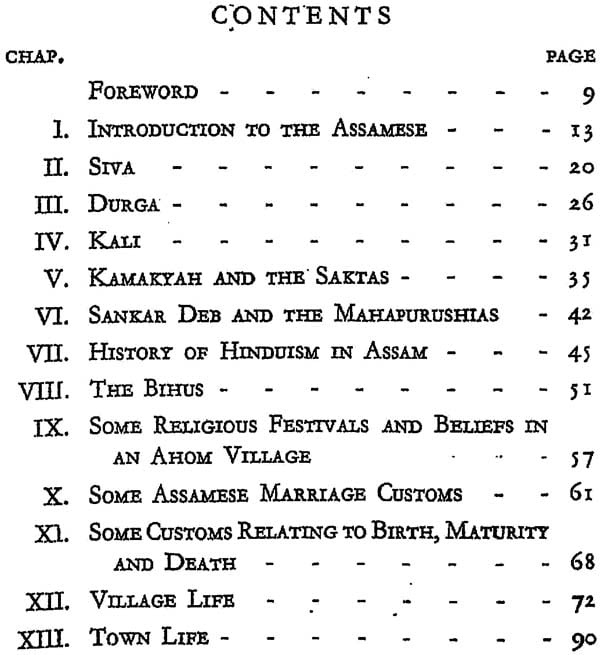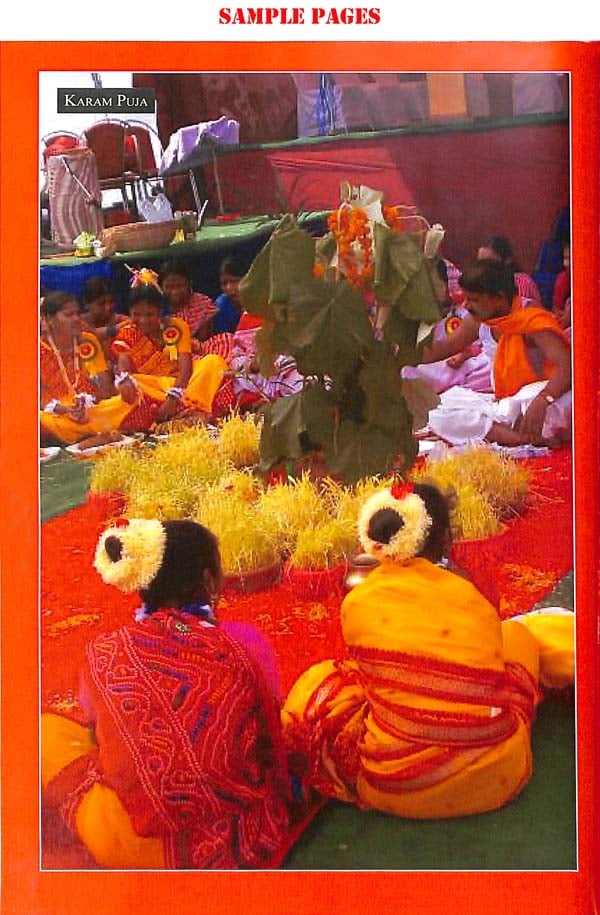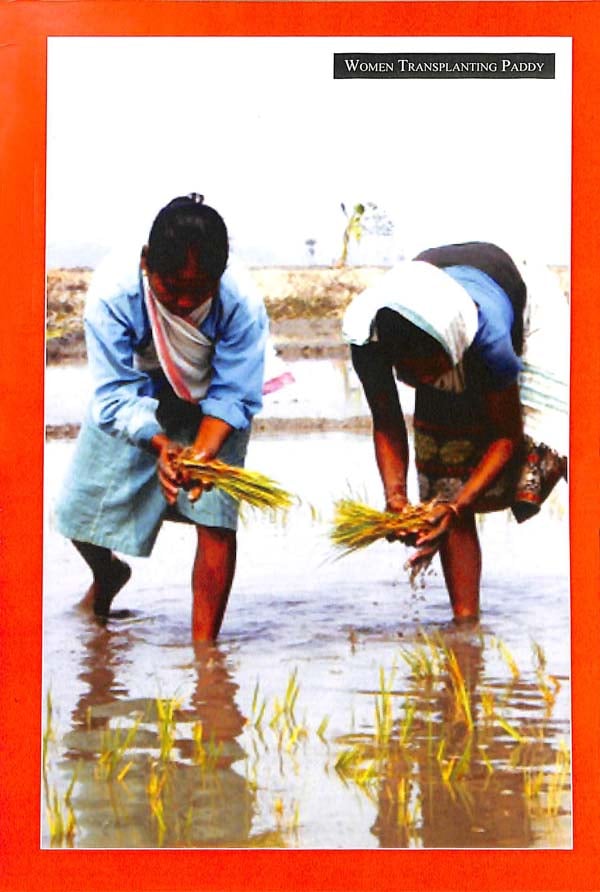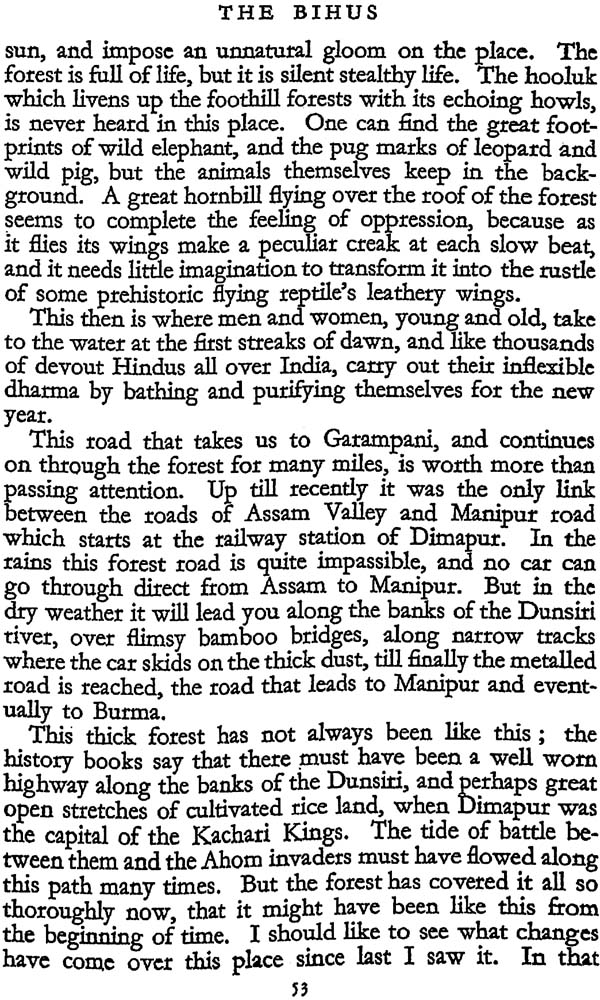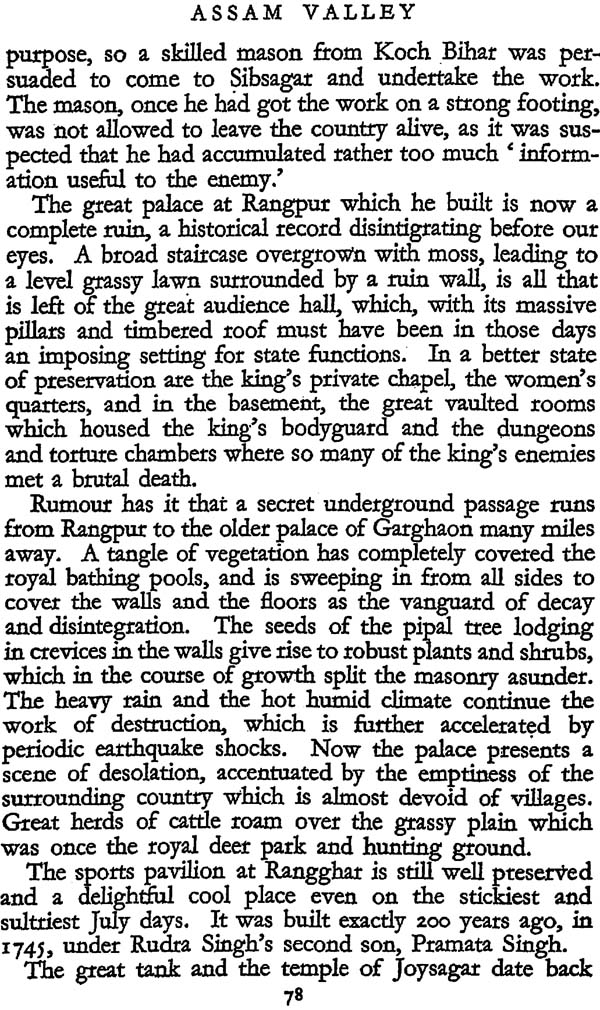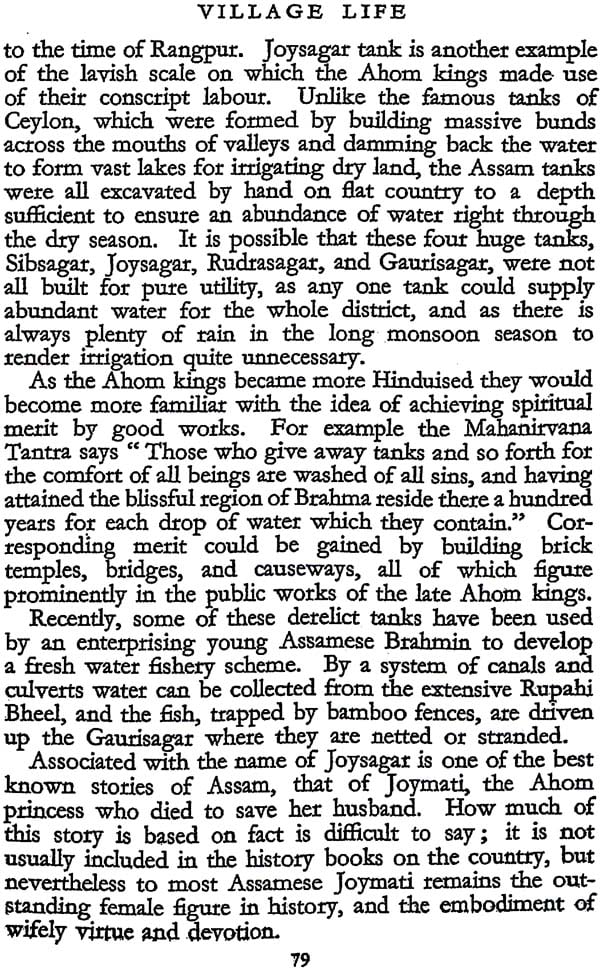
Assam Valley (Beliefs and Customs of The Assamese Hindus)
Book Specification
| Item Code: | NAO795 |
| Author: | R. C. Muirhead Thomson |
| Publisher: | Shubhi Publications, Gurgaon |
| Language: | English |
| Edition: | 2017 |
| ISBN: | 9788182904439 |
| Pages: | 96 (7 color & 19 B/W Illustrations) |
| Cover: | HARDCOVER |
| Other Details | 9.50 X 6.50 inch |
| Weight | 400 gm |
Book Description
In Hinduism, there is no clear distinction between religion and mythology. This book is the study of beliefs of hindus in the Assam Valley. Author believes that some knowledge of hindu mythology is a valuable asset and familiarities with hindus deities and great epics as Ramayana and Mahabharata are important, as it strikes a common chord with the habitant's. It is hoped that through this book, readers would find something new to stimulate their interest in the people and custom's of the Assam Valley.
In these days when the number of books on travel and foreign countries is increasing year by year, I feel that some sort of explanation is due as to why this book was written.
The man who travels in the East is soon aware that some countries are more fully described than others, and that there are numerous books written about some parts of the East, and very few about others. For example, the visitor to Ceylon, Burma, or Malaya will find, if he is interested, an attractive assortment of books dealing with these lands and the people who live there. And he will have little diffi-culty in acquiring, by reading alone, a general idea of the people and their customs, and a solid background into which he can fit his own observations and experiences. Once this knowledge has been gained, the more advanced books and anthropological monographs appear much less formidable than before. Those who become really interested in the lives of the people round them find every encouragement to put their own observations on a sounder and more scientific basis.
The person who is going to spend any time in Assam, on the other hand, finds himself in a much less fortunate position. This small corner of India is a meeting place of so many races and customs that it has long been recognised by the anthropologist as one of the most productive fields for research work. As a result, no area of such a limited size can boast of such an impressive array of monographs ; one can find over a dozen classical studies dealing with the various Naga tribes, with the Meitheis, the Khasis, the Garos, and so on. But practically all these works deal with tribes inhabiting the hills round Assam, primitive people with tribal culture and belief.
The great plains, however, forming the valley of the Brahmaputra or the Assam valley, have received scant attention. It is to this valley that the bulk of the Assamese speaking people are confined, and, with the exception of the single hill state of Manipur, Hinduism also is confined to the plains. The great tea garden industry is also limited to the Brahmaputra and Surma valleys ; cultivation, unlike that of Ceylon or Darjeeling, stopping at the foothills. The bulk of the Europeans associated directly or indirectly with tea planting, spend the greater part of their lives in the valley, and not in the hills.
The people of the valley are so sharply marked off from the hill tribes that these full and detailed monographs described above give one little or no idea about life and customs in the plains. Some of the non-Hindu tribes who have settled in different parts of the valley have been described in The Kacharis by the Rev. S. Endle, and there is much interesting material in Gurdon's Some Assamese, Proverbs. Gait's History of Assam is an indispensible mine of information on all matters historical, though naturally it does not concern itself so much with present day con-ditions. There is useful but scattered information in the Census reports ; and there have been a few books describing the life of the tea planter from the European point of view. With the exception of these, and of a few brief papers scattered through the annals of learned societies, and not easily accessible to the ordinary reader, there is practically nothing to introduce the visitor to the people and customs of the Assam valley.
During the three and a half years I spent in Assam I found this lack of guidance a grave handicap. The significance of so much that I saw remained obscure for too long, and in many ways, particularly with regard to religious background, I learnt more after I had left Assam than when I was actually there. During that period I was engaged in work of an entirely different nature, and all the observations contained in this book were spare time studies accumulated when there was time and when the spirit moved me. In this last clause the movement of the spirit is a much more potent factor than the lack of time. In the sultry enervating climate of Assam enthusiasm tends to wane and interest to flag ; and after leaving the country one is amazed and horrified to look back on the simple things left undone, the ragged ends, the obvious opportunities missed, and the peculiar mental laziness, or 'Assam rot' that may overtake one after three or four rainy seasons.
One is also faced with the fact that many Hindus, even educated ones, are not very helpful at describing their own customs and beliefs, and that their opinions in turn are mainly determined by their caste and social position. In approaching a study of life in Assam I have found that some knowledge of Hindu mythology is a most valuable asset, and that a familiarity with the numerous Hindu deities and heroes, and with the great epics such as the Ramayana and Mahabharata, strikes a common chord even with the illiterate villager. When we remember that with Hinduism there is no clear distinction between mythology and religion, and that religion in turn may determine the whole mode of life and every day actions of the people, the chain of reasoning must be obvious.
Those who are much more familiar with Assam and the Assamese than I am will doubtless find much to criticise in this book ; much that is superficial ; many curious gaps in knowledge; and possibly mistakes and misrepresentations. But I have tried, mainly from my own observations, to write the kind of book which I myself would have appreciated on my first introduction to the Assamese Hindus ; and it is to be hoped that others too may find something here to stimulate their interest in. the people and their customs.
